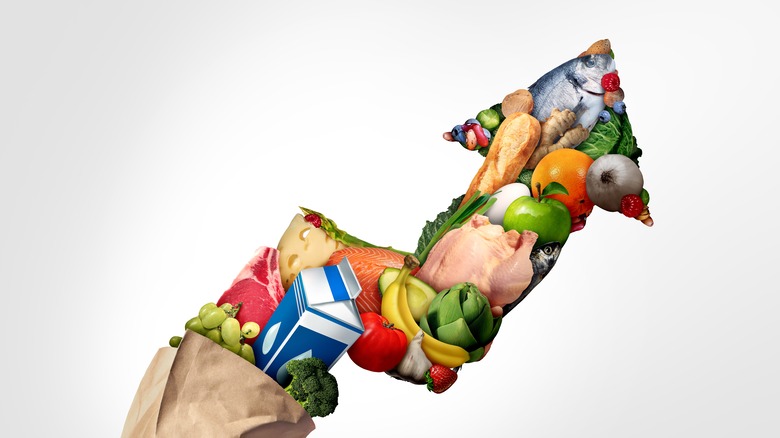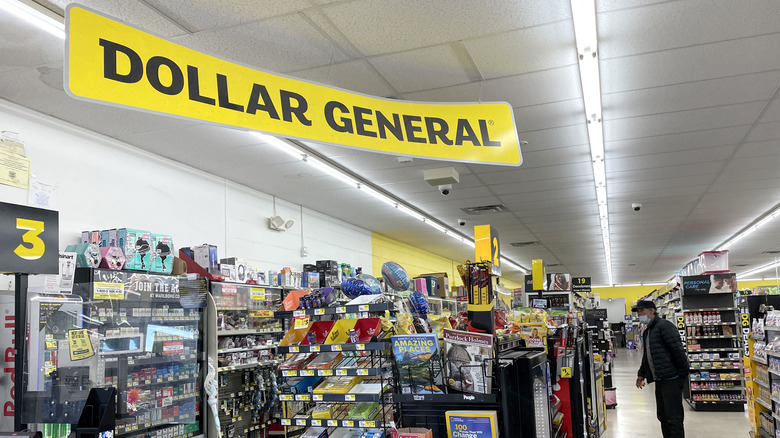How Inflation Is Leading Shoppers To Buy More At Dollar Stores
Many things have changed since the COVID-19 pandemic. Even though many people and things have gone back to business as usual, the economy might not have recovered in the same way thanks to periodic congestion which has choked off various supply chains, an ongoing manpower and labor shortage, as well as increased consumer demand, per CBS News. Geopolitics hasn't helped either, The war on Ukraine affected the food supply has contributed to a global food shortage from which we have yet to recover, AP News reports.
Unfortunately, all these factors have played a role in driving food prices to the highs we're seeing today, and statistics are currently painting a grim story about how far the U.S. dollar will go. With food prices up 12.2% and energy prices up 41.6%, The Wall Street Journal says shoppers are now turning to discount stores like Dollar General and Family Dollar to meet their needs.
Food inflation is forcing a shift in spending patterns
Analysts had been warning about a possible shift in spending habits since due to the food inflation crisis. It began with shoppers pivoting away from restaurants to eating at home, thus fuelling sales in groceries like Albertson's and Kroger, per The Wall Street Journal. Then came reports that shoppers were moving away from national brands in favor of private labels and store brands. In a survey reported by Grocery Dive, shoppers reported being drawn to store brands for a variety of reasons — among them, that these brands represented better value, were of good quality, and had products that were more readily available.
But as prices continued to rise and as the middle class began to feel the squeeze, per Nasdaq, analysts began to warn that shoppers would not only move away from national brands, they would pivot away from spending in grocery stores altogether, per The Wall Street Journal — and it appears that time has come.
Dollar stores are benefitting from the pivot
When it last reported earnings in May, Dollar General said it saw better-than-expected earnings in the first quarter, where sales rose 4.2% to $8.75 billion, per Chain Store Age. At the time, its CEO Todd Vasos had said, "Despite ongoing headwinds due to supply chain pressures and heightened inflation, we remained focused on controlling what we can control and delivered solid financial results, which exceeded our expectations for sales and earnings per share for the quarter." As a result of that strategy, Dollar General expected its sales growth to increase from 10% to 10.5%. Sam's Club memberships have also risen by 10.5%, ostensibly demonstrating an appetite for saving money and buying bulk, per The Wall Street Journal. On the whole, The discount stores saw a 71% increase in grocery buys between October 2021 to June 2022.
Dollar General and Dollar Tree's response to the increase in foot traffic is to say that they exist to "complement, not replace, grocery stores," particularly since they don't offer a wide range of grocery items, including fresh produce — which is only available at about 2,300 out of 18,000 Dollar General stores around the country, per The Wall Street Journal. But that will have to change, particularly if consumer watchdogs are correct and both retailers and food manufacturers continue to use skyrocketing inflation to make billions in additional profit, per CBS News.


